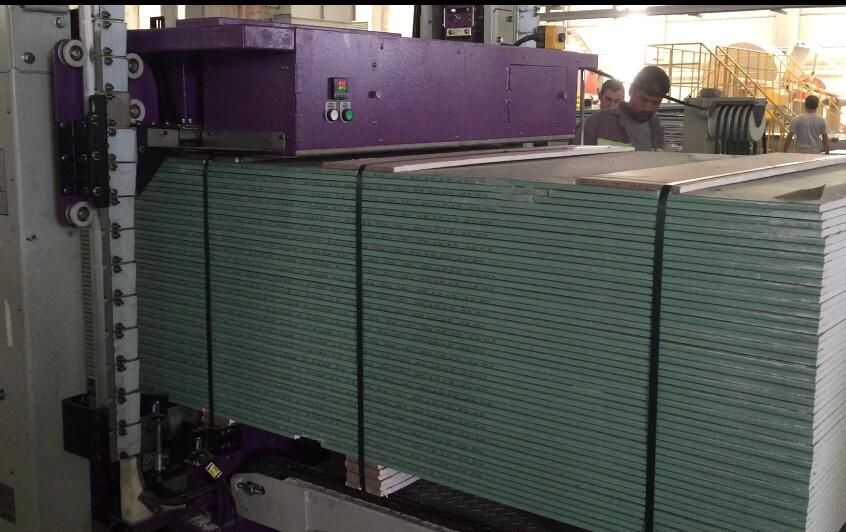Understanding Panel Strapping and Packaging Machines in Manufacturing
Panel Strapping and Packaging Machine
In modern manufacturing and logistics, efficiently securing and protecting large, flat products like panels, sheets, or bundles is crucial. A panel strapping and packaging machine is an automated or semi-automated system designed specifically for this purpose, playing a vital role in preparing goods such as wood panels, metal sheets, building materials, and large appliances for safe storage and transit.
These industrial packaging solutions typically integrate conveying systems with strapping and sometimes wrapping functionalities to create stable, protected loads.
How Panel Strapping and Packaging Systems Operate
The typical operational sequence for a panel strapping and packaging machine involves several key steps:
- Infeed and Conveying: Panels or stacked sheets are loaded, often automatically, onto a conveyor system that transports them into the machine.
- Positioning: The load is precisely positioned within the strapping area. Sensors often ensure correct alignment for optimal strap placement.
- Strapping Application: One or more strapping heads apply strapping material (typically PET, PP, or steel) around the panel bundle. Depending on the machine configuration, straps can be applied vertically, horizontally, or both.
- Tensioning and Sealing: The strapping material is pulled taut around the load to a pre-set tension level. The strap ends are then securely joined, usually through heat sealing (for plastic straps) or mechanical crimping (for steel straps).
- Optional Wrapping: If the machine includes a packaging unit, the strapped bundle may then proceed to be wrapped in protective materials like stretch film or cardboard edge protectors. This adds a layer of defense against scratches, moisture, and impacts.
- Outfeed: The secured and packaged panel load is conveyed out of the machine, ready for storage or shipment.
Key Components of Panel Strapping Machines

While designs vary, most panel strapping systems include:
- Conveyor System: Transports panels through the machine. Can be roller or belt-based.
- Strapping Head(s): The core mechanism that feeds, tensions, and seals the strap.
- Strap Dispenser: Holds and feeds the coil of strapping material.
- Control System (PLC): Manages the machine's operation, sequencing, tension settings, and integration with other line equipment.
- Frame/Arch: Provides the structure around which the panels pass and the strapping occurs.
- (Optional) Wrapping Unit: Applies stretch film or other protective coverings.
Common Strapping Materials Used
The choice of strapping material depends on the load characteristics and required strength:
- Polypropylene (PP): Light-duty, economical option suitable for bundling lighter panels or securing loads within controlled environments.
- Polyester (PET): Offers higher tensile strength and retains tension better than PP, making it suitable for heavier loads and applications where tension recovery is important (e.g., wood panels that might settle). Often seen as a viable alternative to steel. [Link to authoritative source on PET Strapping Properties]
- Steel: Provides the highest tensile strength and rigidity, typically used for very heavy, non-compressible loads like large metal plates or construction materials.
Core Benefits of Utilizing Panel Strapping and Packaging Equipment
Integrating these machines into a production or distribution workflow offers significant advantages:

- Enhanced Load Security and Stability: Properly tensioned straps unitize panels, preventing shifting, collapsing, and damage during handling and transport. This is crucial for maintaining product integrity.
- Improved Product Protection: Strapping secures the load, while added wrapping shields surfaces from scratches, dust, moisture, and minor impacts. Edge protectors can also be incorporated.
- Increased Operational Efficiency: Automation significantly reduces the manual labor required for strapping and packaging, leading to higher throughput, consistent results, and reduced bottlenecks in the packaging line. [Link to relevant internal article on Automation in Manufacturing]
- Reduced Costs: Labor savings, minimized product damage (leading to fewer returns or claims), and optimized material usage contribute to lower overall packaging costs.
- Customization and Flexibility: Machines can be configured to handle various panel dimensions, weights, throughput requirements, and different strapping materials, adapting to specific operational needs.
Industry Applications
Panel strapping and packaging machines are indispensable in various sectors, including:
- Wood Products: Securing bundles of plywood, OSB, MDF, particleboard, and lumber.
- Metal Fabrication: Strapping stacks of sheet metal, fabricated parts, and metal plates.
- Building Materials: Packaging drywall, insulation boards, roofing materials, and siding.
- Appliance Manufacturing: Securing large appliances like refrigerators or washing machines within their protective packaging.
- Furniture Industry: Bundling flat-packed furniture components.
Conclusion
Panel strapping and packaging machines are essential tools for industries handling large, flat goods. By automating the securing and protection process, they enhance load stability, protect products from damage, boost operational efficiency, and contribute to significant cost savings. Understanding their operation, components, and benefits allows manufacturers and distributors to optimize their packaging processes for safer and more economical handling and transportation. [Link to relevant internal article on Packaging Best Practices]